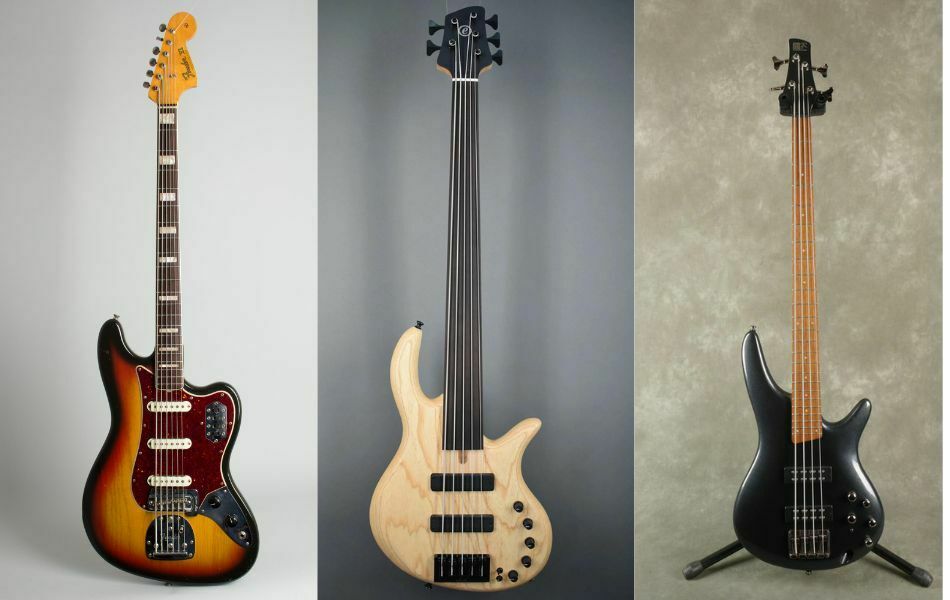Perfecting Your Drop G bass tuning
Have you ever wanted to create a powerful and deep sound for your band? If you're a bass player seeking ways to adjust your sound with Drop G tuning, then this is the place for you. In this guide, we will go further by delving into drop G bass tuning and how to fine-tune your strings to achieve the perfect sound.
The basics of drop G bass tuning
Bass guitars can come with varying numbers of strings, but the most common configurations are 4-string and 5-string bass guitars. These two configurations are the standard in most musical genres. However, there are also bass guitars with 6, 7, 8, and even more strings, which are often used in specialized genres or for specific musical needs.
Drop G bass tuning can be applied to bass guitars with 4, 5, and 6 strings. Here's how you would approach drop G tuning for each of these configurations:
4-String Bass Guitar (Standard E A D G tuning)
Lowest String (E): Tune down the lowest string (usually the E string) to a G note. This involves loosening the string's tension until it reaches the G pitch. Your tuning will now be G A D G.
5-String Bass Guitar (Standard B E A D G tuning)
Lowest String (B): Tune down the lowest string (usually the B string) to a G note. Again, you'll need to decrease the tension of the string until it reaches the G pitch. Your tuning will now be G E A D G.
6-String Bass Guitar (Standard B E A D G C tuning)
Lowest String (B): Tune down the lowest string (usually the B string) to a G note. The process is the same: lower the string's tension until it's tuned to G.
Second Lowest String (E): Some 6-string basses have a lower string than standard, often tuned to C. In this case, you might choose to tune the second lowest string down to G as well to maintain that consistent interval. Your tuning for these two strings will be G G A D G G.

How to tune drop G bass tuning
Clip-on electric tuner
Clip-on electric tuners have indeed revolutionized the tuning process for guitars and basses. They offer a convenient and accurate way to tune instruments without the need for plugging in cables.
Clip the tuner onto the headstock of your bass guitar. Make sure it's securely attached and positioned where it can easily sense the vibrations of the strings. Choose the bass mode to ensure that the tuner is set up to accurately detect the low frequencies of your bass guitar. Pluck the lowest string (usually the E string) and start tuning it down to a G note. The tuner's display will show you the pitch of the note you're playing.
Guitar Tuner app
It sounds like Guitar Tunio is a highly recommended best guitar tuner app that offers a variety of features for tuning different instruments and accommodating various tunings. It includes complex ones like drop G bass tuning. A user-friendly interface and accurate tuning capabilities can greatly enhance the experience of musicians when tuning their instruments.
Using such apps can indeed make the tuning process easier and more convenient, especially for alternate and lower tunings like drop G. Being able to quickly and accurately tune your bass guitar using a smartphone app can be a valuable tool for both beginners and experienced players.

Bass strings for drop G
When it comes to selecting strings for drop G bass tuning, you'll want to choose string gauges that provide the right tension and tonal balance for the lower tuning. Drop G is quite low, so it's important to consider heavier gauge strings to maintain proper tension and avoid a loose or muddy sound. Here are some string gauge recommendations for drop G bass tuning:
For a 4-string bass:
- G: 125 to 135 (or even higher for a more defined sound)
- D: 90 to 100
- A: 70 to 80
- E: 45 to 55
For a 5-string bass (with a low B string):
- G: 125 to 135
- D: 90 to 100
- A: 70 to 80
- E: 45 to 55
- B: 30 to 40
It's worth noting that the specific gauges you choose will also depend on your playing style, preferences, and the specific characteristics of your bass guitar. Keep in mind that heavier strings will generally provide better tension and tonal clarity in lower tunings, but they might require some adjustments to your bass's setup, such as truss rod and intonation adjustments.
Exploring the realm of alternative bass tunings? Well, diving into Drop G bass tuning is an excellent initial step. If you find its sound and playability appealing, there's absolutely nothing wrong with embracing it as your go-to tuning. As previously mentioned, numerous renowned bands have centered their music around Drop G and have achieved remarkable, enduring success by doing so.








